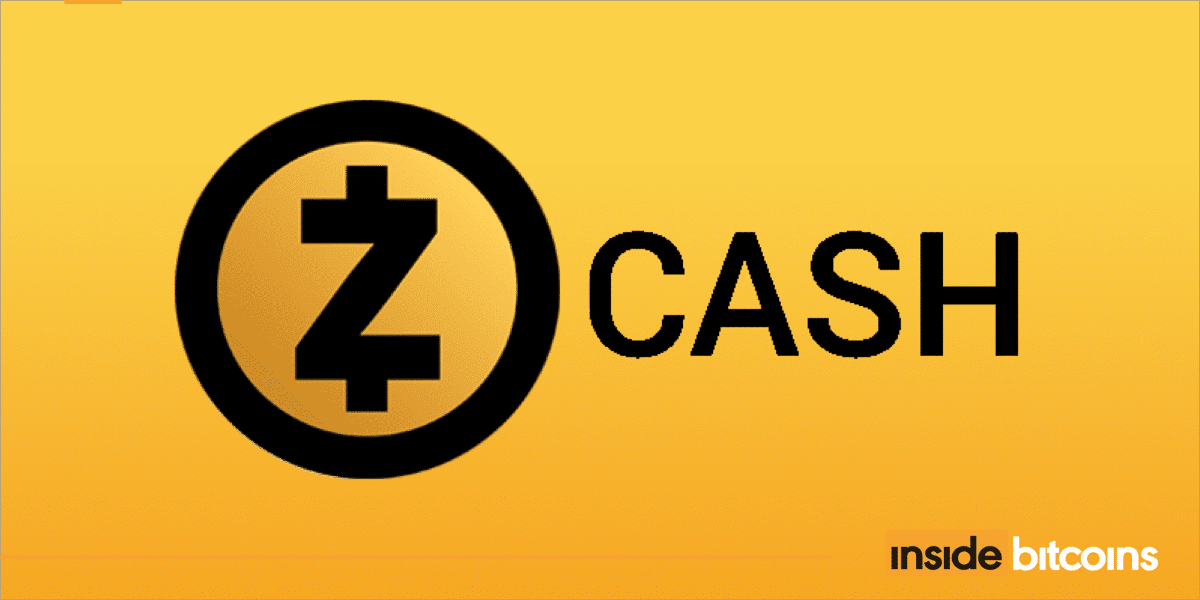The rise of
stablecoins has been nothing short of revolutionary. These digital currencies,
which are frequently pegged to traditional assets such as the US dollar, have
promised to transform the way corporations conduct international trade. But the
big question is whether stablecoins have genuinely delivered on their promise
of making cross-border commerce cheaper and easier, or if they come with their
own set of complexity and risks.
Stablecoins, in
essence, provide a unique combination of stability and efficiency. Stablecoins,
as opposed to cryptocurrencies such as Bitcoin, which are noted for their price
volatility, are intended to have a consistent value. Because of their
stability, they are an appealing solution for enterprises engaged in
cross-border trade, as they reduce the currency risk that frequently plagues
international transactions. However, the devil is in the details, and the
influence of stablecoins on cross-border business is worth investigating
further.
Stablecoins
have made cross-border business more cost-effective by lowering transaction
fees. Traditional banking systems and foreign exchange firms can charge
exorbitant costs for overseas money transfers, eroding enterprises’ profit
margins. Stablecoins, which use blockchain technology, provide a speedier and less
expensive alternative. They enable near-instantaneous transfers at a fraction
of the cost, decreasing the financial obstacles to worldwide expansion for
enterprises.
Furthermore,
stablecoins enable round-the-clock cross-border transactions, regardless of
time zone differences. This ongoing availability eliminates the need for
enterprises to wait for banking hours or deal with international wire transfer
delays. This enhanced efficiency is a big advantage in the world of global
trade, where time is often of the importance.
Hurdles to overcome
Despite these
advantages, it is critical to recognize that the use of stablecoins in
cross-border business has
not been without hurdles. One of the main issues is regulatory oversight.
Because there is no standard regulatory framework for stablecoins across
jurisdictions, many firms are concerned about compliance and legal risks.
Because of this uncertainty, some businesses may be hesitant to fully embrace
stablecoins for overseas transactions.
Another issue
is the volatility of stablecoin values, however to a lower extent than typical
cryptocurrencies. While stablecoins are intended to have a stable value, they
can nonetheless experience fluctuations, particularly if the underlying assets
underpinning them fluctuate significantly. To limit potential losses,
businesses must carefully examine this risk and consider hedging solutions.
Furthermore,
the stablecoin ecosystem is always changing as new entrants and ideas emerge.
This variety can make it difficult for businesses to choose the best stablecoin
for their purposes. The presence of numerous stablecoin kinds, each with its
own set of features, might make decision-making more difficult and raise
questions about which one provides the best mix of stability and utility.
Given these obstacles,
it is clear that stablecoins, while promising, are not a one-size-fits-all
solution for cross-border business. Businesses must use them with caution,
taking into account aspects like as regulatory compliance, risk management, and
the specific requirements of their foreign operations.
Implementing
Stablecoins
Some businesses
have successfully implemented stablecoins into their cross-border commerce
strategy and reaped the rewards. Stablecoins, for example, have proven to be a
realistic solution for global e-commerce platforms to receive payments from
customers all around the world. They may extend their consumer base and make
the purchasing process easier for overseas buyers by doing so.
Stablecoins
have also found appeal in supply chain financing. Stablecoins can help businesses
perform faster and more transparent transactions with suppliers and partners
all around the world. This streamlined approach not only saves money, but it
also eliminates the danger of fraud and delays.
The use of
stablecoins in cross-border commerce has also resulted in the development of
novel financial services. For example, some fintech firms now provide
cross-border payment solutions based on stablecoins, allowing businesses to
make and receive payments in seconds. These services have the potential to
revolutionize the way firms manage international financial transactions.
The Coexistence
Conundrum: CBDCs and Stablecoins – A Deeper Dive
The recent Future Innovation
Summit in Dubai delved into the complex question of whether Central Bank
Digital Currencies (CBDCs) and stablecoins can harmoniously coexist in the
ever-evolving financial landscape. The expert panel, featuring prominent
figures in the industry, sought
to decipher the nuances and potential challenges of this coexistence.
Government Control vs.
Decentralization
Eetu Kuneinen, the co-founder
of the gold-backed stablecoin project DGC, raised the point that CBDCs, being
government-issued, inherently tend toward centralization. While they may
leverage blockchain technology, this centralized nature brings certain
associated risks, as it concentrates power in the hands of a singular entity –
the government. In contrast, Kuneinen argued that fostering a framework for a
stablecoin not controlled by a single private entity may offer a preferable
alternative.
Towards Progress and
Web3
Nikita Sachdev, founder of Luna
Media Corp, presented a contrasting view. She posited that governments’
exploration of blockchain technology for CBDCs could potentially be a stepping
stone towards more significant decentralization and the era of Web3. Sachdev
advocated for an open-minded approach, hinting at the potential evolution of
CBDCs into a more decentralized form in the future. However, she remained
cautious, emphasizing that recent events like the TerraUSD (UST) collapse had
underscored the risks associated with stablecoins.
Early Stages and
Interoperability
Jorge Carrasco, the managing
director of FTI Consulting, recognized that blockchain technology is still in
its early stages, implying that hurdles and challenges are inevitable on the
path to progress. Carrasco optimistically suggested that CBDCs and stablecoins
might evolve to become interoperable. This interoperability could potentially
pave the way for seamless collaboration between the two financial solutions.
User-Centric
Decision-Making
Jagadeshwaran Kothandapani, the
head for Middle East and Africa for Citibank, echoed his fellow panelists and
underscored the critical role of user preferences in determining the way
forward. In his view, companies and individual users should be the ones
deciding which solution best addresses their specific “pain points.”
Whether CBDCs or stablecoins gain prominence would depend on their perceived
stability and degree of decentralization.
In essence, the question of
whether CBDCs and stablecoins can coexist remains open-ended. The evolving
financial landscape, combined with ongoing technological developments and
user-driven adoption, will play a pivotal role in shaping the future of these
digital financial instruments.
Conclusion
In conclusion,
stablecoins have unquestionably improved cross-border commerce by lowering
transaction costs, enhancing efficiency, and extending options for enterprises
to engage in global trade. However, they are not without difficulties, such as
regulatory uncertainty and the possibility of value volatility. To make
educated judgments, businesses considering the use of stablecoins should
thoroughly examine their individual needs, risks, and the changing stablecoin
landscape.
The rise of
stablecoins has been nothing short of revolutionary. These digital currencies,
which are frequently pegged to traditional assets such as the US dollar, have
promised to transform the way corporations conduct international trade. But the
big question is whether stablecoins have genuinely delivered on their promise
of making cross-border commerce cheaper and easier, or if they come with their
own set of complexity and risks.
Stablecoins, in
essence, provide a unique combination of stability and efficiency. Stablecoins,
as opposed to cryptocurrencies such as Bitcoin, which are noted for their price
volatility, are intended to have a consistent value. Because of their
stability, they are an appealing solution for enterprises engaged in
cross-border trade, as they reduce the currency risk that frequently plagues
international transactions. However, the devil is in the details, and the
influence of stablecoins on cross-border business is worth investigating
further.
Stablecoins
have made cross-border business more cost-effective by lowering transaction
fees. Traditional banking systems and foreign exchange firms can charge
exorbitant costs for overseas money transfers, eroding enterprises’ profit
margins. Stablecoins, which use blockchain technology, provide a speedier and less
expensive alternative. They enable near-instantaneous transfers at a fraction
of the cost, decreasing the financial obstacles to worldwide expansion for
enterprises.
Furthermore,
stablecoins enable round-the-clock cross-border transactions, regardless of
time zone differences. This ongoing availability eliminates the need for
enterprises to wait for banking hours or deal with international wire transfer
delays. This enhanced efficiency is a big advantage in the world of global
trade, where time is often of the importance.
Hurdles to overcome
Despite these
advantages, it is critical to recognize that the use of stablecoins in
cross-border business has
not been without hurdles. One of the main issues is regulatory oversight.
Because there is no standard regulatory framework for stablecoins across
jurisdictions, many firms are concerned about compliance and legal risks.
Because of this uncertainty, some businesses may be hesitant to fully embrace
stablecoins for overseas transactions.
Another issue
is the volatility of stablecoin values, however to a lower extent than typical
cryptocurrencies. While stablecoins are intended to have a stable value, they
can nonetheless experience fluctuations, particularly if the underlying assets
underpinning them fluctuate significantly. To limit potential losses,
businesses must carefully examine this risk and consider hedging solutions.
Furthermore,
the stablecoin ecosystem is always changing as new entrants and ideas emerge.
This variety can make it difficult for businesses to choose the best stablecoin
for their purposes. The presence of numerous stablecoin kinds, each with its
own set of features, might make decision-making more difficult and raise
questions about which one provides the best mix of stability and utility.
Given these obstacles,
it is clear that stablecoins, while promising, are not a one-size-fits-all
solution for cross-border business. Businesses must use them with caution,
taking into account aspects like as regulatory compliance, risk management, and
the specific requirements of their foreign operations.
Implementing
Stablecoins
Some businesses
have successfully implemented stablecoins into their cross-border commerce
strategy and reaped the rewards. Stablecoins, for example, have proven to be a
realistic solution for global e-commerce platforms to receive payments from
customers all around the world. They may extend their consumer base and make
the purchasing process easier for overseas buyers by doing so.
Stablecoins
have also found appeal in supply chain financing. Stablecoins can help businesses
perform faster and more transparent transactions with suppliers and partners
all around the world. This streamlined approach not only saves money, but it
also eliminates the danger of fraud and delays.
The use of
stablecoins in cross-border commerce has also resulted in the development of
novel financial services. For example, some fintech firms now provide
cross-border payment solutions based on stablecoins, allowing businesses to
make and receive payments in seconds. These services have the potential to
revolutionize the way firms manage international financial transactions.
The Coexistence
Conundrum: CBDCs and Stablecoins – A Deeper Dive
The recent Future Innovation
Summit in Dubai delved into the complex question of whether Central Bank
Digital Currencies (CBDCs) and stablecoins can harmoniously coexist in the
ever-evolving financial landscape. The expert panel, featuring prominent
figures in the industry, sought
to decipher the nuances and potential challenges of this coexistence.
Government Control vs.
Decentralization
Eetu Kuneinen, the co-founder
of the gold-backed stablecoin project DGC, raised the point that CBDCs, being
government-issued, inherently tend toward centralization. While they may
leverage blockchain technology, this centralized nature brings certain
associated risks, as it concentrates power in the hands of a singular entity –
the government. In contrast, Kuneinen argued that fostering a framework for a
stablecoin not controlled by a single private entity may offer a preferable
alternative.
Towards Progress and
Web3
Nikita Sachdev, founder of Luna
Media Corp, presented a contrasting view. She posited that governments’
exploration of blockchain technology for CBDCs could potentially be a stepping
stone towards more significant decentralization and the era of Web3. Sachdev
advocated for an open-minded approach, hinting at the potential evolution of
CBDCs into a more decentralized form in the future. However, she remained
cautious, emphasizing that recent events like the TerraUSD (UST) collapse had
underscored the risks associated with stablecoins.
Early Stages and
Interoperability
Jorge Carrasco, the managing
director of FTI Consulting, recognized that blockchain technology is still in
its early stages, implying that hurdles and challenges are inevitable on the
path to progress. Carrasco optimistically suggested that CBDCs and stablecoins
might evolve to become interoperable. This interoperability could potentially
pave the way for seamless collaboration between the two financial solutions.
User-Centric
Decision-Making
Jagadeshwaran Kothandapani, the
head for Middle East and Africa for Citibank, echoed his fellow panelists and
underscored the critical role of user preferences in determining the way
forward. In his view, companies and individual users should be the ones
deciding which solution best addresses their specific “pain points.”
Whether CBDCs or stablecoins gain prominence would depend on their perceived
stability and degree of decentralization.
In essence, the question of
whether CBDCs and stablecoins can coexist remains open-ended. The evolving
financial landscape, combined with ongoing technological developments and
user-driven adoption, will play a pivotal role in shaping the future of these
digital financial instruments.
Conclusion
In conclusion,
stablecoins have unquestionably improved cross-border commerce by lowering
transaction costs, enhancing efficiency, and extending options for enterprises
to engage in global trade. However, they are not without difficulties, such as
regulatory uncertainty and the possibility of value volatility. To make
educated judgments, businesses considering the use of stablecoins should
thoroughly examine their individual needs, risks, and the changing stablecoin
landscape.
















